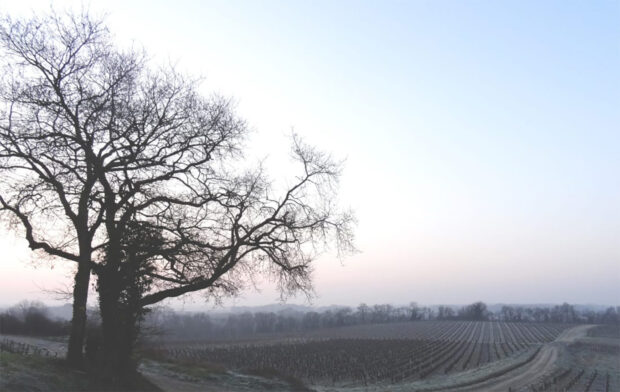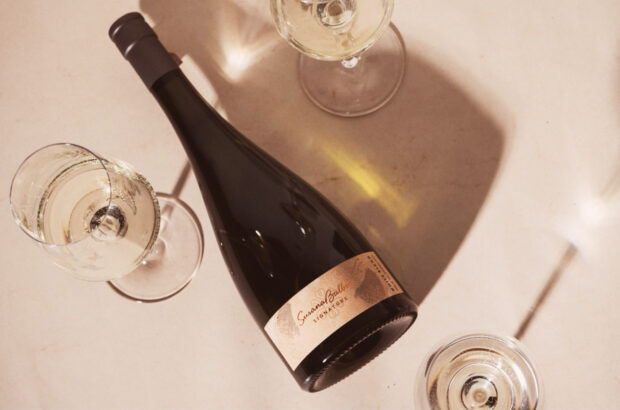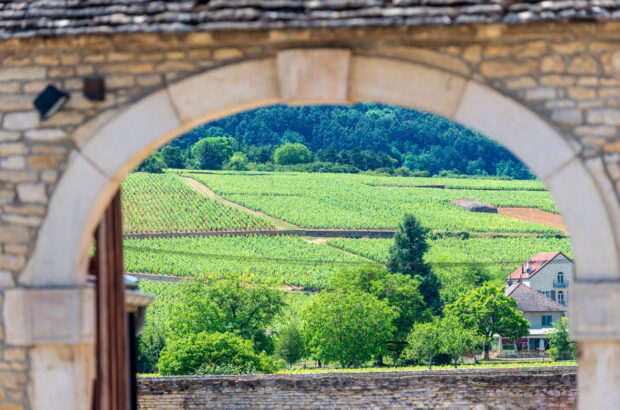You could almost hear the vineyards gurgling with pleasure: this April drench came after three years of drought. A pair of trail runners emerged from a path through the bushes just beneath us, their 400m climb over, sodden, panting, beaming. ‘All that effort for nothing,’ lamented one of the wine- growers, shaking his head in wry amusement. ‘And we can’t get people to work on the vines.’
This is Collioure, in all its astonishment and difficulty. It could be a little mountain Burgundy of the south – or perhaps France’s miniature Etna. Its main grape variety, Grenache, is the Pinot of hot places: pale, delicate, nuanced and subtle, capable of casting spells with its perfumed twill of dappled acidity and tender tannin. If you want ‘saline’, if you want ‘stone’, your tongue will find them in white Collioure; they rival the reds in force and beauty of expression. The hills are hammered and squeezed into a series of schist amphitheatres: beckoning nuance, intimating wealth of expression. And all… still hidden.
Hidden? ‘Banyuls kills terroir,’ said the appellation president Romuald Peronne of Clos Saint Sebastien. Remember that Banyuls and Collioure occupy the same territory – and he wasn’t criticising the region’s historical wine, either. He simply meant that the fortification, oxidation and extended ageing of Banyuls turns them from wines of place into wines of method, in large part: prized they may be, but you drink time, craftsmanship and regional expression rather than the uniqueness of a parcellaire (single-vineyard wine) in a particular vintage.
Yet Collioure has that complexity to offer. ‘We’re discovering terroir again today. We still don’t know our crus. We stuffed up big-time in the past because we just didn’t understand the vineyards. Now that’s changing.’ The evolution, in fact, is similar to what’s underway in Jerez, as I described in my September column: a return to the limpidity of source.
Not that it’s easy. These are immensely challenging vineyards to work – almost unmechanisable, owing to their steepness, stoniness and difficult access. Most of those owning the vineyards are double-actifs: people with 1ha at most, tended at weekends.
Not only are plantings mixed in varietal terms, but sometimes the vines are owned by the grower while the land itself is owned by the landlord (locally called a complant). Organic cultivation in Collioure is difficult: green the inter-rows, and the companion plants will be drinking the water the vines need. Since you can’t get machines into vineyards, you must weed by hand – which few have the resources or time to do.
Irrigation is still banned here – but no one’s complaining, according to Peronne. ‘Our yields are qualitative. They have higher yields elsewhere in Roussillon, but they can’t sell their wines. We don’t have under-production; we just have under-commercialisation.’
He’s aiming to change that, not least through a policy of vigorous independence for what he’s calling his vignerons sur mer (‘wine-growers-on-sea’). Banyuls, Collioure and the IGP Côte Vermeille are pulling out of the CIVR (Conseil Interprofessionnel des Vins du Roussillon) body on 1 January next year.
Peronne is energetic, a bull on a charge, though his wines have finesse. Many of the other growers in Collioure are poets of labour, theologians of stone, working as if awed and humbled by the landscape in which they find themselves. Notably the cultured Parcé family, through its several linked branches (Parcé Frères, La Préceptorie, Domaine Augustin); the re-born Mas Blanc and Pic Joan, flourishing under Laura Parcé and Jean Solé; the painstaking Philippe Gard at Coume del Mas; and passionate Laëtitia Piétri-Clara of Domaine Piétri-Géraud.
And the tide is turning: 2023 produced 8,500hl of Banyuls – but 13,500hl of Collioure. Make sure you get a sip.
In my glass this month
It’s hard (for me, at any rate) to imagine a ‘wine of the south’ that better captures what we might call a Burgundian ideal than Domaine Augustin’s Adéodat Collioure Rouge 2021. Roughly 85% Grenache and 15% Carignan, seasoned with co-planted Grenache Gris, Mourvèdre, Counoise and Cinsault, it’s lyrical through its entire register, watermarked by plant and stone, yet sustained and structured by a quiet warmth – the flame and flare of its place.













